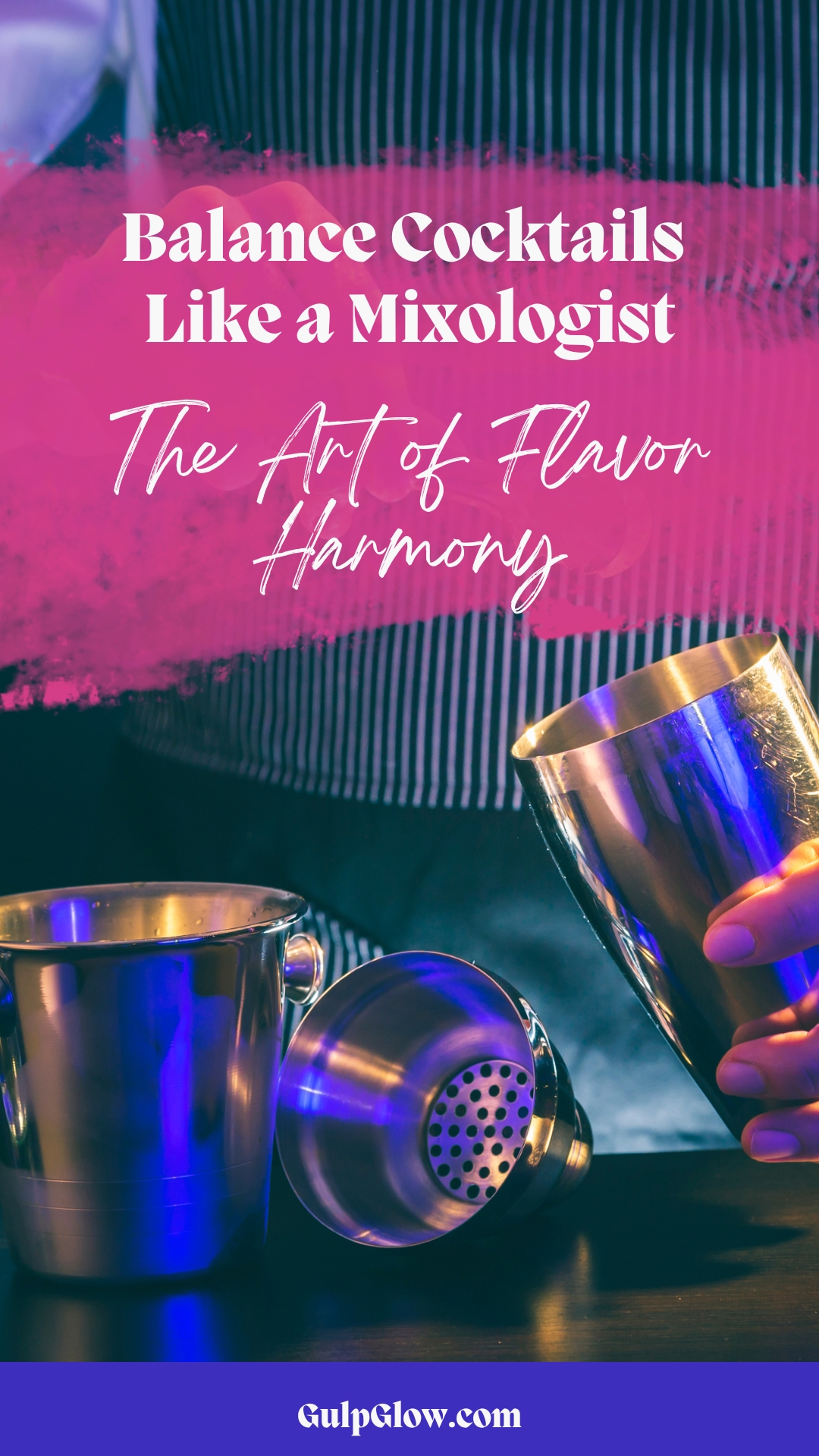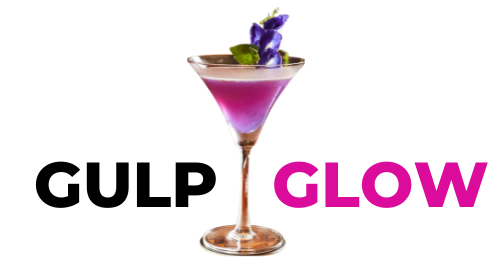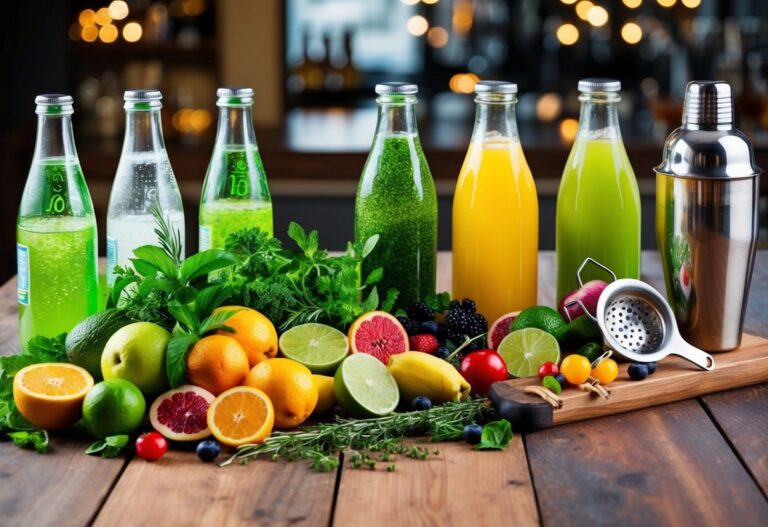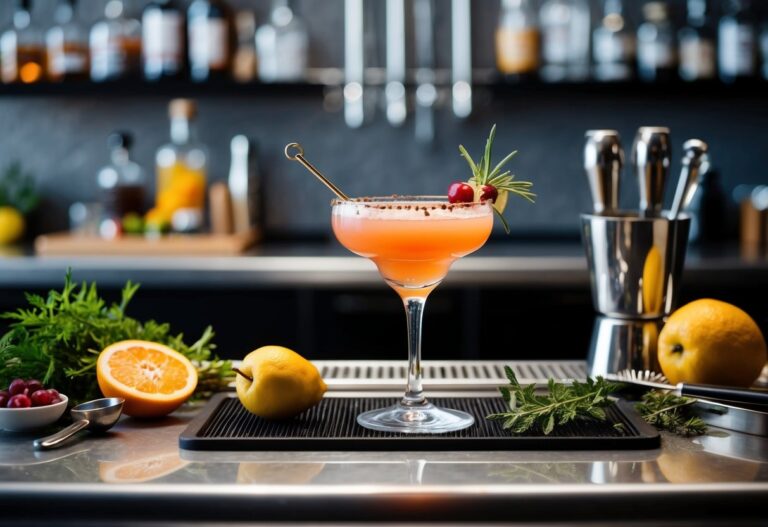The Art of Balancing Flavors in Cocktails: Mastering Mixology Made Easy
Have you ever wondered how your favorite bartenders create that perfect cocktail? It’s all about mastering the art of balancing flavors. Combining the right amount of sweetness, sourness, bitterness, and even saltiness can transform a simple mix into a complex and enjoyable drink. The secret to great cocktails lies in how you blend these flavors with your chosen spirit.
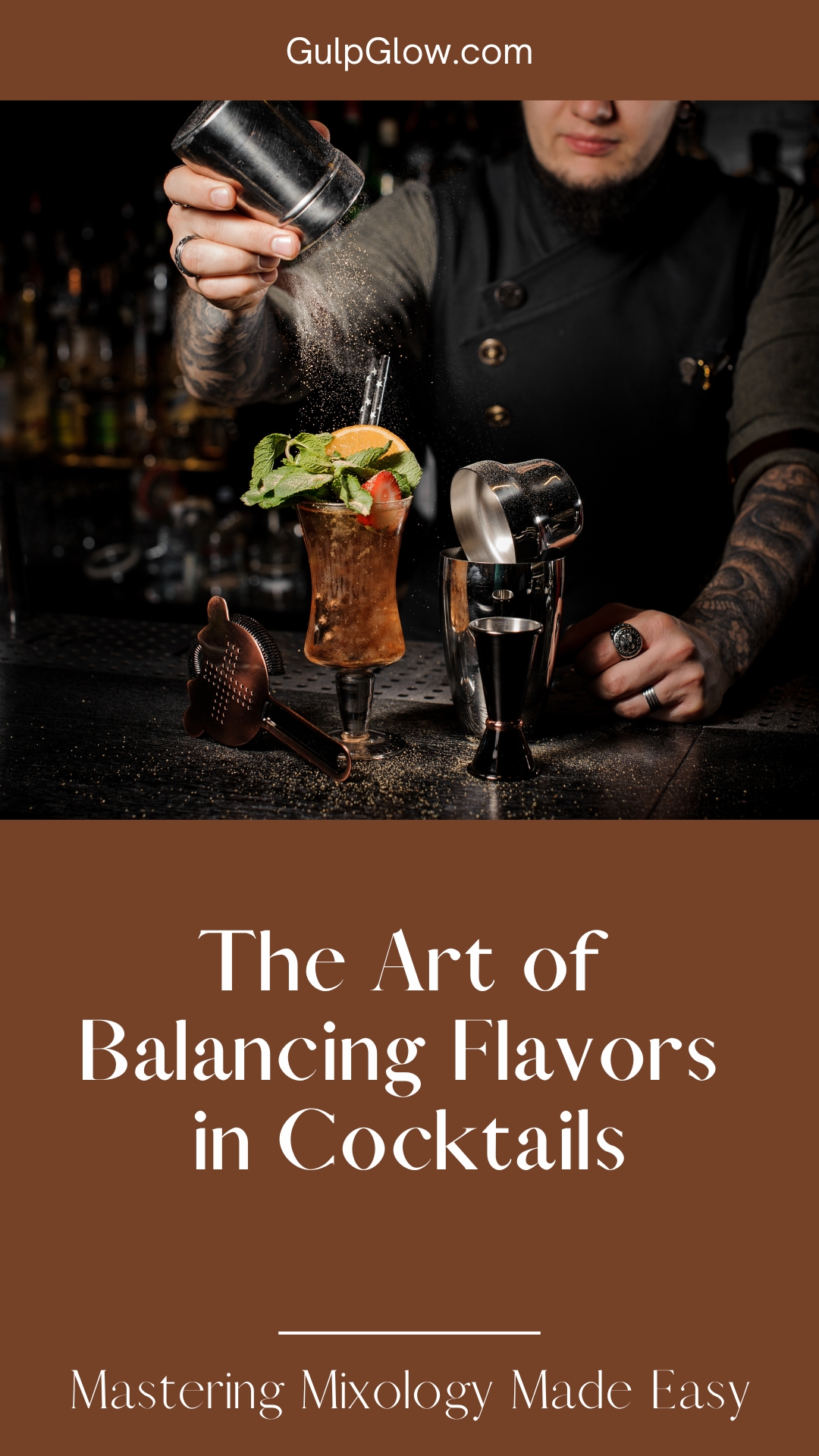
Balancing flavors in cocktails isn’t just guesswork; it’s a delightful mix of science and creativity. Experimenting with different ingredients makes it possible to find that perfect harmony in every sip. Imagine a classic Margarita: 2 ounces of tequila, 1 ounce of triple sec, and 1/2 ounce of lime juice. Adjusting these ratios, as you prefer, can make all the difference. Maybe a little more lime juice if you enjoy a tangier taste?
Anyone can become a mixologist with a bit of practice and curiosity. Playing with various spirits, liqueurs, and fresh ingredients can lead to surprising and delicious results. Don’t be afraid to try new combinations and discover what works best for you. After all, the best cocktails are the ones that suit your palate perfectly.
Understanding Cocktail Basics
In the world of cocktails, knowing the fundamental components and science behind them is crucial. It makes creating a balanced drink much easier and more enjoyable. Let’s explore the key ingredients and methods that will elevate your mixology skills.
Essential Ingredients and Their Roles
A great cocktail typically consists of a few core ingredients: spirit, liqueurs, syrups, juices, and bitters.
- Spirits: These form the base of most cocktails. They include whiskey, vodka, gin, rum, and tequila.
- Liqueurs: These add flavor and sweetness. Examples include triple sec, amaretto, and vermouth.
- Syrups: Simple syrup is often used to sweeten drinks. You can also find flavored syrups like grenadine or honey.
- Juices: Fresh juices such as lime, lemon, and orange are vital for adding acidity and balance.
- Bitters: A few dashes of bitters like Angostura can add complexity and depth to your drink.
Each ingredient plays a unique role. For instance, the spirit provides the alcohol base, liqueurs add flavor, syrups and juices bring in sweetness and acidity, and bitters add an extra layer of flavor. Balancing these elements leads to a harmonious and tasty cocktail.
The Science of Mixology
Mixology isn’t just an art; it’s also rooted in science. Understanding the balance of flavors, aromas, and textures is key.
- Ratios: One common cocktail ratio is 2:1:1. That means 2 parts spirit, 1 part sweet, and 1 part sour.
- Sweet and Sour: Balancing these two elements ensures your drink isn’t too sweet or too tart. A good example is a Margarita, which often uses 1 1/2 ounces tequila, 1 ounce triple sec, and 1/2 ounce lime juice.
- Bitters and Umami: Bitters can act as the “salt and pepper” of cocktails. They add that missing zing.
- Temperature and Mixing: Shaking or stirring cocktails also affects the final flavor and texture. Shaking adds more air and changes the texture, while stirring keeps it smooth.
Using the right proportions and methods, you can craft a cocktail that is not just drinkable but unforgettable. Whether you’re a beginner or a pro, mastering these basics will help you make better cocktails every time.
The Five Flavor Profiles
Crafting the perfect cocktail is all about balancing five key flavors: sweet, sour, bitter, salty, and umami. Each of these flavors plays a unique role in creating a delicious and well-rounded drink.
Sweet: Sugar and Syrups
Sweetness often forms the backbone of many cocktails. It balances out strong spirits and adds depth. Common sweeteners include simple syrups, honey, and agave nectar. You might also use liqueurs like triple sec or amaretto.
Sugar should be added carefully to avoid overpowering other flavors. A good rule of thumb is to start small and adjust based on your taste preferences.
Sour: Citrus and Acidity
Sour flavors, primarily from citrus fruits like lemons and limes, add brightness and a refreshing zing to cocktails. Think of classics like the margarita and the whiskey sour.
To achieve the right level of sourness, freshly squeezed juice is always best. Pre-packaged juices often contain preservatives that can alter the flavor profile.
Bitter: Bitters and Aromatics
Bitterness can balance sweetness and add complexity to your drink. Bitters are concentrated flavor extracts made from herbs, spices, and roots.
Common types of bitters include Angostura and orange bitters. Just a few drops can transform a cocktail, making it more interesting and layered.
Salty: Enhancing Depth
Salt isn’t just for margarita rims. A small pinch can enhance flavors and highlight sweetness, much like it does in cooking.
Salt also helps to balance out bitterness. Just be cautious not to overdo it – too much can easily overwhelm your drink.
Umami: The Savory Factor
Umami, or savory flavors, might be less common in cocktails, but they add a unique depth. Ingredients like tomato juice in a Bloody Mary or even certain bitters can bring umami to the table.
Experimenting with umami can lead to surprising and delightful results, making your cocktails stand out.
Mastering the Art of Balance

Balancing flavors in cocktails is an art form involving the right mix of ingredients. You need to find perfect ratios, understand effects of dilution and temperature, and adjust sweetness and bitterness.
Finding the Perfect Ratios
Getting the right balance starts with the perfect ratios of ingredients. Classic cocktails, like the Margarita or Daiquiri, rely on a 2:1:1 ratio (spirit:sour).
- Spirit: Forms the base and provides the primary flavor.
- Sour: Usually citrus juice, which adds a tangy zest.
- Sweet: Can be simple syrup, flavored syrup, or liqueur to add depth.
Practice mixing small batches until you find the combo that works best for you.
Impact of Dilution and Temperature
Dilution and temperature can change a cocktail’s flavor profile dramatically. Ice is crucial:
- Dilution: Melting ice dilutes drinks but tempers strong flavors.
- Temperature: Cold beverages numb taste buds, so they need strong flavors.
Use larger ice cubes as they melt slower. Try stirring or shaking cocktails with ice for different dilution effects.
Adjusting for Sweetness and Bitterness
Balancing sweetness and bitterness is key. Too sweet? Add a bit of sour or bitter.
- Sweeteners: Use syrups (simple or flavored) or liqueurs.
- Bitterness: Comes from ingredients like bitters (e.g., Angostura) or certain spirits (e.g., Campari).
Experiment with drops of bitters or small adjustments in sweeteners until your cocktail tastes just right.
Balancing flavors in cocktails is like solving a puzzle. Mix, taste, and adjust often.
Advanced Techniques and Concepts

Advanced techniques in cocktail making involve creating unique textures, integrating intriguing aromas, and presenting drinks in aesthetically pleasing glassware. These elements elevate the experience beyond just taste.
Exploring Textures and Layers
Textures and layers add depth to your cocktails. Techniques like muddling allow you to crush fruits and herbs gently to release their flavors without creating bitterness. Another technique, infusion, introduces new flavors by steeping ingredients like spices or fruits in spirits.
Using egg whites is a popular method to give a frothy texture to drinks like the whiskey sour. Fat-washing, where fat is infused into a spirit and then removed, adds a rich and silky mouthfeel. These techniques enhance the overall sensory experience of a cocktail.
Incorporating Aromas and Garnishes
Aromas play a crucial role in how we perceive flavor. Adding a twist of lemon peel or a sprig of rosemary can transform a drink. Bitters are often used in small quantities to add complex aromas and layers of flavor.
Smoked cocktails are also gaining popularity. Using a smoking gun, you can infuse your drink with fragrant wood smoke, adding depth and intrigue. Garnishes like herbs, citrus peels, or edible flowers not only enhance aroma but also add visual appeal.
The Role of Glassware and Presentation
The right glassware and presentation can elevate your cocktail from ordinary to exceptional. Each type of glass is designed to complement particular cocktails. For example, martini glasses keep the drink cool and prevent ingredients from separating, while highball glasses are ideal for fizzy drinks.
Pay attention to the temperature of your glassware. Chilled glasses keep drinks cool longer, enhancing the sipping experience. Ice is also important; using large, clear ice cubes reduces dilution and keeps your drink flavorful.
Proper presentation, including garnishes and glassware, adds the final touch that makes the drink not only taste good but look inviting.
Creative Exploration in Cocktails

Exploring creatively in cocktails means trying new ideas, reimagining old classics, and staying updated with trends. It’s about blending flavors uniquely, adjusting recipes, and making your drinks stand out.
Experimentation and Innovation
Start with the basics. Know your ingredients: spirits, liqueurs, juices, syrups, and mixers. Play around.
Try adding unexpected elements. Think herbs like thyme or basil, or even spices such as cinnamon or chili.
Keep a notebook. Record what works and what doesn’t. Trial and error helps you refine.
Don’t be afraid to deviate from the standard. If a recipe calls for lemon, try lime or orange, and match different combinations to see what delights your taste buds.
Interpreting Classic Cocktails
Knowing classic cocktails is crucial. It’s like knowing the roots before growing new branches.
Consider a Margarita. Traditionally, it’s tequila, lime juice, and triple sec. Twist it by adding a splash of grapefruit juice or a hint of jalapeño.
Think about the balance in classics. For instance, if a Moscow Mule is too sharp, a dash of simple syrup can mellow it out while adding complexity.
Respect tradition, but add your flair. It keeps the drink familiar yet exciting.
Tapping into Cocktail Trends
Stay updated. Trends change how people perceive flavors and styles.
Seasonal ingredients are big now. Fresh fruits in summer or warm spices in winter can elevate your cocktail game.
Presentation matters. Think about garnishes, glassware, and even ice shapes! Clear ice cubes or flavored ice can make a big impression.
Match your cocktails with current diets and preferences. Consider low-alcohol options or non-alcoholic mocktails, aligning with health-conscious trends.
Watch for global flavors. Ingredients like yuzu from Japan, or South American pisco, can add an exotic twist.
Flavor Dynamics in Popular Cocktails

Balancing flavors in cocktails involves understanding how different ingredients interact. Great cocktails achieve harmony through careful mix of sweet, sour, bitter, salty, and umami notes.
Deconstructing the Margarita
The Margarita is a great example of balance. It combines lime juice, tequila, and triple sec (orange liqueur).
- Lime juice provides a sour note that cuts through the richness of the spirit.
- Tequila offers a base with earthy, sometimes peppery undertones.
- Triple sec introduces a sweet and citrusy layer.
A pinch of salt enhances flavors and tempers any bitterness from the lime.
Balancing an Old Fashioned
An Old Fashioned is a classic that features whiskey, bitters, and a sugar cube.
- Whiskey forms the foundation, offering warmth and complexity.
- Bitters add a hint of spice and aromatic complexity.
- A sugar cube sweetens the drink just enough to round out the flavors.
Garnished with an orange peel, this cocktail achieves a balanced yet robust flavor profile.
Crafting the Perfect Negroni
Negronis blend equal parts gin, Campari, and sweet vermouth.
- Gin contributes botanical and herbal notes.
- Campari brings a bold, bitter edge.
- Sweet vermouth adds sweetness and depth, balancing the bitterness.
This drink creates a symphony of flavors, making it a favorite among those who appreciate a bitter edge.
Refreshing with a Mojito
A Mojito is known for its refreshing quality, featuring rum, mint, lime, sugar, and soda water.
- Rum provides a sweet, molasses-like base.
- Mint adds a fresh, cooling element.
- Lime offers sourness that balances the rum’s sweetness.
- Sugar enhances and melds the flavors together.
Topped with soda water, it becomes a light, fizzy drink, perfect for warm weather.
The Sweet and Sour Whiskey Sour
The Whiskey Sour combines whiskey, lemon juice, and simple syrup.
- Whiskey gives the drink body and warmth.
- Lemon juice adds a tart, acidic bite.
- Simple syrup provides the necessary sweetness to counter the sourness.
A touch of egg white can be added for a silky texture, enhancing the mouthfeel without impacting the overall flavor dynamics.
By understanding how these components come together, you can mix cocktails that not only taste balanced but also delight the senses.
Frequently Asked Questions

Balancing flavors in cocktails is a combination of art and science. This section will cover key questions about achieving harmony in your cocktail creations.
How can you tell if a cocktail is well-balanced?
A well-balanced cocktail has no single dominating flavor. You should taste a mix of sweet, sour, bitter, and sometimes salty notes. The flavors should complement each other rather than overpowering any single note.
What techniques do expert bartenders use to achieve the perfect flavor profile in a drink?
Expert bartenders often use a method called “tasting as you go.” They adjust ingredients bit by bit, checking flavor balance continuously. Using fresh, high-quality ingredients and understanding how each component interacts also play a role.
Can you list the essential taste components that every balanced cocktail should have?
The essential taste components include:
- Sweetness: Usually from syrups or sugar
- Sourness: Often from citrus like lemon or lime
- Bitterness: From bitters or certain spirits
- Strength: Provided by the base spirit
- Water: Added through shaking or stirring to balance out the flavors
Why is the order of mixing ingredients important in cocktail making?
The order affects how well ingredients blend and how flavors develop. For instance, adding sugar before alcohol ensures it dissolves fully. Shaking with ice last helps chill and dilute the drink to the desired consistency and taste.
What role does the type of glassware play in the taste of a cocktail?
Glassware impacts the drinking experience. A martini glass, for instance, keeps the drink cold without much dilution from melting ice. The shape can also enhance the aroma, contributing to the overall flavor profile.
How do contrasting flavors contribute to the complexity of a cocktail?
Contrasting flavors make a cocktail interesting and layered. Sweet and sour balance each other, while a bit of bitterness can add depth. Achieving the right mix ensures that every sip offers a new and enjoyable experience.
